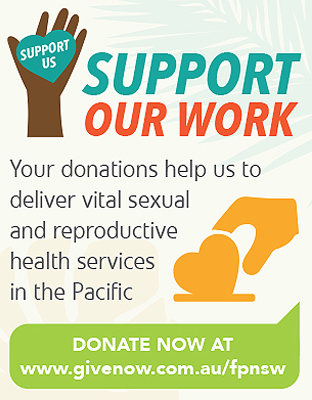Contraceptive Diaphragm
A diaphragm is a barrier method of contraception for women.
It's a shallow dome of silicone with a firm and flexible rim.
Family Planning NSW seeking 500 women to use the female condom and provide their feedback
March 11, 2019
Family Planning NSW is conducting a study to better understand women's views about the female condom. Family Planning NSW Medical Director Dr Deborah Bateson said the study would provide important information that would help grow our understanding about preferences and user experiences with the female condom, which can be used both for contraception and to prevent sexually transmitted infections.
An updated guide to contraception. Part 3: Permanent methods, traditional methods and emergency contraception
Reference
Stewart M, McNamee K, Harvey C, Bateson D, 2018, An updated guide to contraception. Part 3: Permanent methods, traditional methods and emergency contraception, Medicine Today, 19(12) 36-45An updated guide to contraception Part 2: Long-acting reversible methods
Reference
Harvey C, McNamee K, Bateson D, Stewart M, 2018, An updated guide to contraception Part 2: Long-acting reversible methods, Medicine Today, 19(11) 20-33Enhancing use of emergency contraceptive pills: A systematic review of women’s attitudes, beliefs, knowledge, and experiences in Australia
Reference
Mooney-Somers J, Lau A, Bateson D, Richters J, Stewart M, Black K, Nothnagle M, 2018, Enhancing use of emergency contraceptive pills: A systematic review of women’s attitudes, beliefs, knowledge, and experiences in Australia, Health Care Women Int., Online doi: 10.1080/07399332.2018.1526286Survey of men's knowledge and attitudes towards sexually transmissible infections and contraception
Research status
Completed
Overview of Study
In 2014, Family Planning NSW, in partnership with the national online dating website ‘RSVP’, conducted an anonymous online survey among male online dating users to investigate their experiences, knowledge, attitudes and beliefs regarding contraceptive use and sexually transmissible infections (STIs). In total, 3781 responses were collected.
Acceptability of the Copper Intrauterine Device (Cu-IUD) as a form of emergency contraception
Research status
Completed
Overview of Study
Emergency contraception (EC) can be used to prevent pregnancy after unprotected sexual intercourse. Currently three main methods of EC are available in Australia: Ulipristal Acetate pill, 1.5mg Levonorgestrel pill, and the Copper Intrauterine Device (Cu-IUD). The Cu-IUD is the most effective EC, and is also the only form of EC to provide ongoing, effective reversible contraception. However, it is the least frequently used method of EC.
Insertion of intrauterine devices by registered nurses: exploring the impact on current clinical practice in sexual and reproductive health within the Family Planning NSW setting.
Research status
Completed
Overview of Study
Intrauterine Devices (IUDs) are very effective in preventing pregnancy but they require a health professional trained in IUD insertion to carry out the insertion procedure. Intrauterine devices are most commonly inserted by physicians in Australia. However, registered nurses (RNs) and nurse practitioners in other countries have increasingly been inserting IUDs, which reduces the need for physician availability to provide this service.
Training midwives in the insertion of the contraceptive implant to increase uptake in the immediate postpartum period: a feasibility pilot study
Research status
In progress
Overview of Study
Australia has a relatively high rate of unintended pregnancy. Women may be particularly susceptible to unintended pregnancies in the 12 months after giving birth, partially due to difficulty accessing contraception. It is therefore essential that there be minimal barriers to accessing effective contraception in the postpartum period, including long-acting reversible contraceptives (LARC). LARC methods (including the implant and intrauterine devices) are the most effective at preventing unintended pregnancies.


